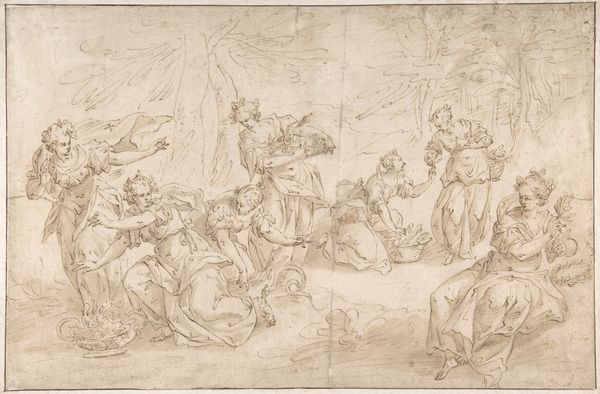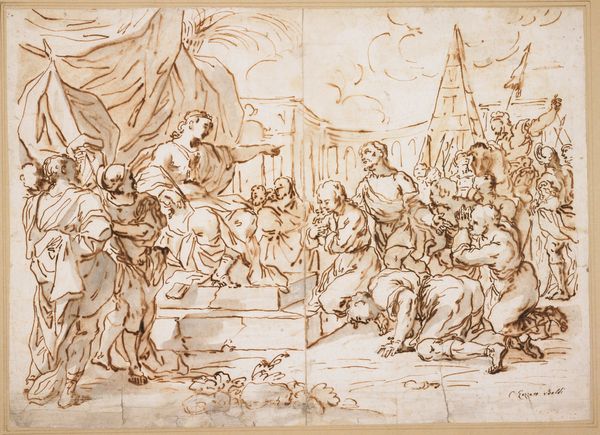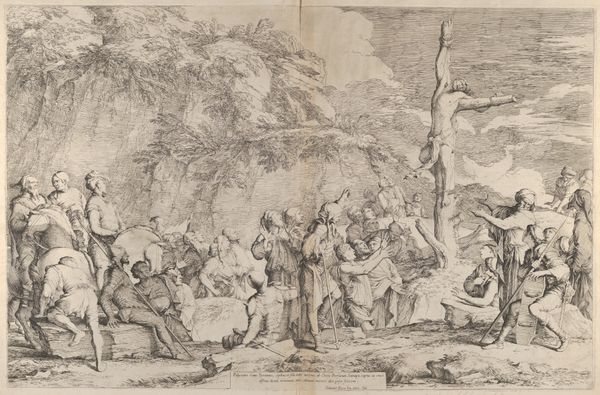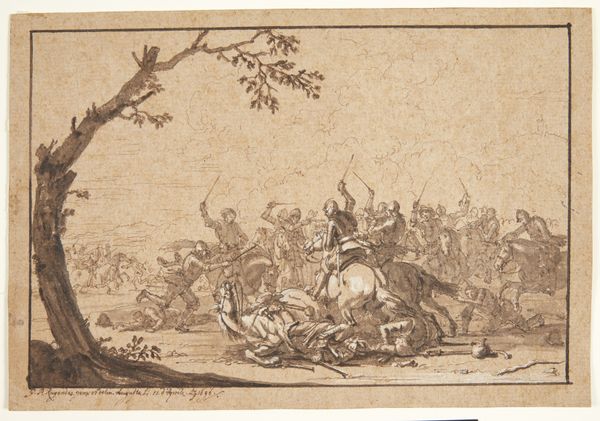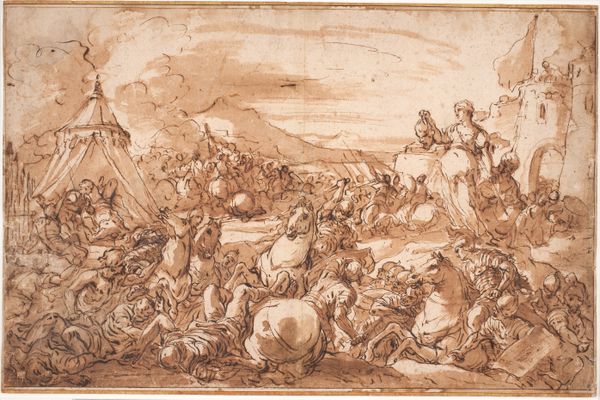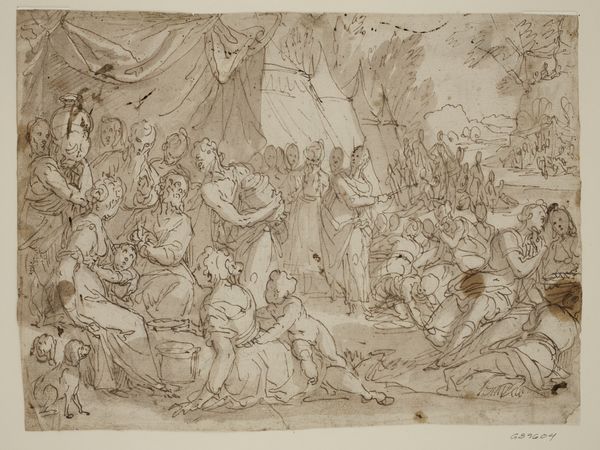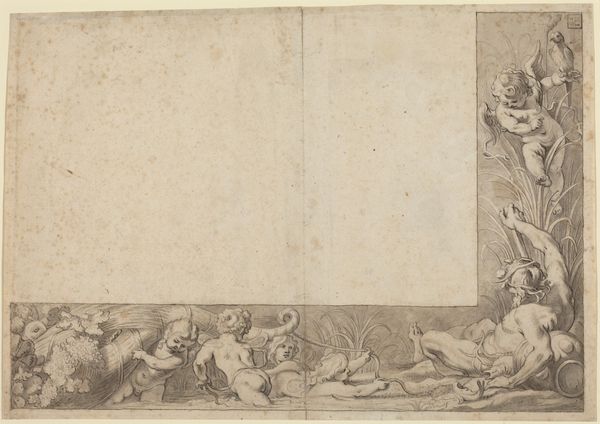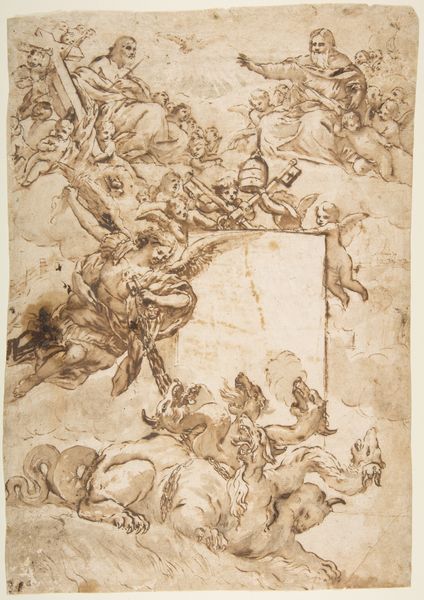
Christus nach den drei Versuchungen von Engeln bedient c. 1605 - 1607
0:00
0:00
drawing, paper, ink, chalk
#
drawing
#
baroque
#
paper
#
oil painting
#
ink
#
chalk
#
history-painting
Copyright: Public Domain
Curator: Here we have Adam Elsheimer's "Christ being ministered to by Angels after the Temptations," circa 1605 to 1607. It is rendered in chalk, ink, and wash on paper. Editor: It's surprisingly detailed, especially given the medium. There’s an overall softness, a diffused light that gives it a dreamlike quality, but the linear structures really stand out. Curator: Indeed, Elsheimer uses the wash to create depth and atmosphere, qualities becoming popular among landscape and history paintings of the Baroque period. Note how he positions Christ after his ordeal with angels, who present bread, water, and comfort. This imagery was quite common, showing God’s divine grace after a struggle, but what's so amazing is that the narrative is set within such a broad natural landscape. Editor: You're right. And that positioning creates an interesting compositional balance. There's this push and pull between the earthly figures and that ascending perspective in the backdrop – mountain forms are sketched against what could be heavenly suggestions above. Curator: Right, and how does that structural arrangement affect your reading of the work? Editor: Well, the narrative is about earthly temptation. And while Christ is served on earth, our eye moves to the suggestion of higher spiritual aspirations above. I get the sense that Christ is already psychologically looking toward heaven. This gives him dignity within the picture, setting him apart from the rest, even amongst these benevolent angelic figures who are now attending him. He is not wholly present, he’s more ethereal than he is solid, and I find it an appealing contrast with the earthiness of the angels. Curator: The Städel Museum provides interesting insights here. Elsheimer produced many compositional studies, and these were likely done for various patrons across Europe to demonstrate different skills, subjects, and thematic approaches for future commissioned artwork. This particular theme seems less overtly religious as far as Baroque subjects go. The art of collecting itself began shifting around the same time. What does it suggest? Editor: Interesting! Considering that collecting shift and a more secular marketplace, one could interpret this piece, even unintentionally, as speaking to earthly trials in a universal sense—that even in moments of spiritual and psychological depletion, humanity finds respite. Thank you for your perspectives on the formal structures that make that reading viable. Curator: And thank you for showing how that connects with historical considerations about its commission, market, and function.
Comments
No comments
Be the first to comment and join the conversation on the ultimate creative platform.


